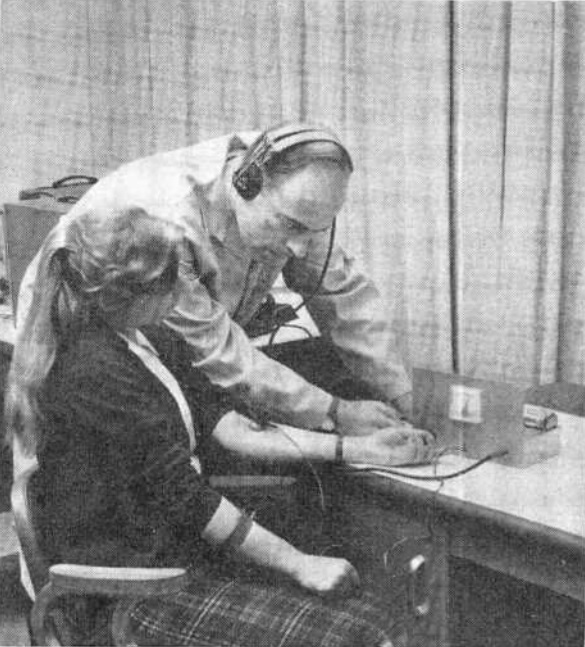 If Junior is looking for a spectacular science project in the field of biomedical engineering, this one is a sure winner.
If Junior is looking for a spectacular science project in the field of biomedical engineering, this one is a sure winner.
Sixty years ago, the June 1961 issue of Popular Electronics showed how to construct this simple cardiac monitor. The circuit was simple, amounting to a 4 transistor audio amplifier. The diagram called for 2N279 transistors, which are apparently unobtainium today, but this substitution guide lists the 2N2431 as equivalent, and it is available at a reasonable price.
The input comes from two electrodes, one of which is placed on each arm. In this position, they will pick up the currents from the heart, which are alternating currents of up to 100 kHz. The audio portions will be audible in the headphones, and also displayed on the meter. The magazine notes that you are not hearing the actual sound of the heart, merely the amplified voltage sent to the heart muscle. Other muscles can be monitored by placing the electrodes on either side of the muscle in question.
The electrodes are simply pieces of metal placed on the body. Prior to placing them, the skin needs to be scrubbed to improve the conductivity. This is done by scrubbing with Lava soap
or Ajax cleanser. (However, since Ajax is now billed as “non-scratching”, I’m not sure it would still work.) The article notes that the device is completely safe, even for children. First of all, it runs off only three volts. And the connection to the electrodes goes through a capacitor, so even that voltage has no pathway to the body.
More advanced versions are available today, but the advanced student will almost certainly bring home the blue ribbon in the science fair by building the medical device at home.

